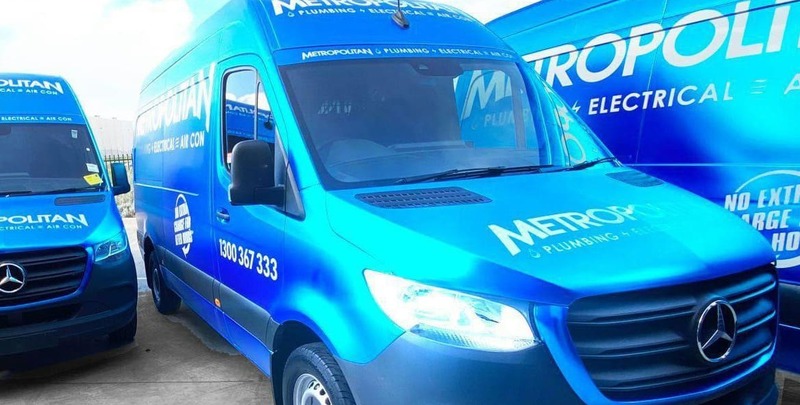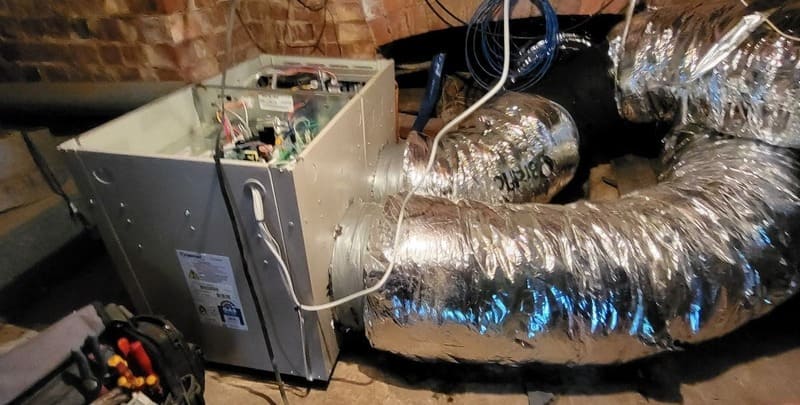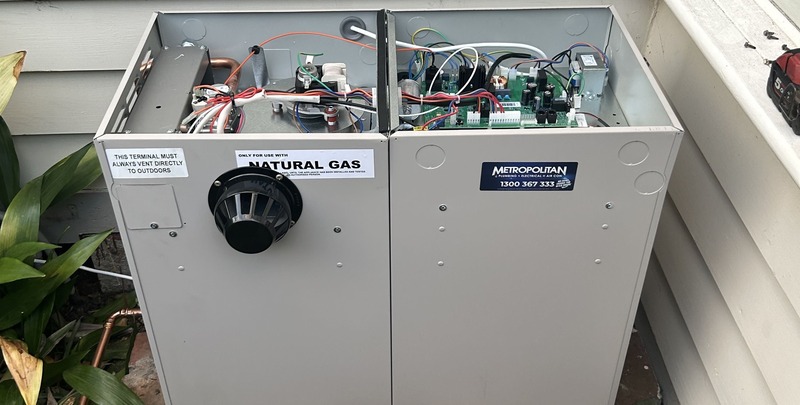
How Does Ducted Air Conditioning Work and What are Its Benefits?
Ducted air conditioning is a centralised heating and cooling system designed to regulate indoor temperatures efficiently, allowing complete climate control. It involves a network of ducts and components that distribute heated or cooled air throughout a building.
Such systems are indispensable for maintaining comfortable indoor environments in regions with hot climates.
A ducted air conditioning system refers to a heating and cooling system that uses a network of ducts to deliver conditioned air to various rooms or zones within a building.
Unlike individual air conditioning units, ducted-in air conditioning systems provide centralised heating and cooling. This allows consistent air flow and comfort across the entire space and the ability to control the temperature levels in different zones.
Overview of a Ducted AC System
Ducted air conditioning systems consist of several vital components, including an indoor or ducted air conditioning work unit, an outdoor air conditioner unit, ductwork runs, and a thermostat or control panel.
These components work together to extract heat and oxygenated air from indoor or ducted aircon works, take in oxygenated air from ducted aircon works and transfer it outdoors, and distribute cooled air back through ductwork runs into the building.
Efficient cooling from ducted air conditioners is essential for maintaining comfortable and healthy indoor environments, especially during hot summer. Ducted air conditioning systems offer precise temperature control, humidity regulation and air filtration, improving indoor air quality and occupant comfort.
Understanding Ducted Air Conditioning
To understand ducted air conditioning, let’s examine the different components that make-up a central heating and cooling system.
- Indoor unit: The indoor unit of a ducted air conditioning system contains the evaporator coil, ducted air conditioner, fan, and air filter. It is typically installed in a whole ducted air conditioner system in a central location, such as a ceiling cavity, utility room, or closet. It is responsible for cooling the house and filtering indoor air before distributing it to split system air conditioning and through the ductwork.
- Outdoor unit: The outdoor compressor unit houses three main components: the compressor, condenser coil and fan, which work together to release heat absorbed from indoor air into cooled refrigerant to cool the outdoor compressor unit and environment. The compressor circulates cooled refrigerant between outdoor units’ indoor and fresh air intake, facilitating the cooling process.
- Ductwork: Ductwork consists of a network of insulated pipes, vents, ducts or channels that transport cooled or warm air from the same room or indoor unit to various rooms or zones within the house or building. Properly designed and installed ductwork ensures efficient airflow and temperature distribution throughout the room and other living space components throughout the room or home.
- Thermostat and control panel: The thermostat and control panel allow users to set and adjust critical functions for the whole or ducted air conditioning system, unit, or system’s desired temperature and operating modes. Advanced control features may include programmable schedules, zoning capabilities, remote access to central units and essential functions via smartphone or computer.

Functionality and Interconnection of Components
Refrigerant lines and electrical wiring interconnect the indoor and outdoor units of a ducted air conditioning system. During operation, how does a ducted air conditioning system work, and how does ducted air conditioning work in an outdoor unit work?
The compressor in the outdoor unit compresses and circulates refrigerant, absorbing heat from indoor air conditioners and transferring it to the outdoor coil.
Meanwhile, how does ducted air conditioning work? Keep reading to find out.
How Ducted Air Conditioning Works
Now that we’ve examined the different components of a ducted air conditioning system, let’s look closely at how it all works.
The Cooling Process
Ducted air conditioning systems employ refrigeration principles to extract heat from indoor cool air, resulting in a cooling effect. The refrigerant absorbs heat from cool air as it evaporates in the ducted air conditioner indoor cool-down coil.
It then releases heat from oxygenated, cool air as it condenses in the ducted air conditioner outdoor coil, completing the refrigeration cycle at different temperatures. The air can also be heated in a reverse cycle unit or a gas heater.
Distribution of Conditioned Air
Once a central unit has cooled, the air is circulated through the ductwork and dispersed into individual rooms or zones via vents or diffusers.
Zoning capabilities allow users to control airflow and temperature independently in different building areas and multiple rooms, optimising comfort and energy efficiency.
Temperature Regulation and Control
The thermostat monitors indoor temperatures and activates the air conditioning system to maintain the desired air temperature set.
Advanced thermostats may incorporate sensors and algorithms to adapt to changing conditions and minimise energy consumption while still cooling requirements and ensuring optimal comfort.
Energy Efficiency Features
Ducted air conditioning systems may incorporate energy-efficient components and features, such as variable-speed compressors, air conditioners, programmable thermostats, and zoning controls.
These technologies help reduce energy consumption, lower utility bills and minimise environmental impact.
Benefits of Ducted Air Conditioning
There are many advantages to installing a ducted air conditioning system, including:
- Consistent heating and cooling: Ducted air conditioning split systems provide uniform heating and cooling across all areas of the home. A ducted system works by eliminating hot or cold spots ensuring consistent comfort levels throughout.
- Zone control for personalised comfort: Zoning capabilities allow users to customise temperature settings for different rooms or zones, maximising comfort and energy efficiency based on individual preferences and occupancy patterns across multiple rooms.
- Energy efficiency and cost savings: Ducted air conditioning systems can significantly reduce energy consumption and utility costs compared to traditional cooling methods by optimising airflow and temperature control.
- Reduced noise levels: Centralised systems operate quietly, with most of the noisy main components of the system being located outdoors, minimising indoor noise levels and enhancing occupant comfort.
- Improved air quality and filtration: Ducted air conditioning systems typically include air filters that capture dust, pollen, and other airborne particles, improving indoor air quality and reducing allergens and respiratory irritants.

Installation Process for Ducted AC
A ducted air conditioning system must be installed by a qualified technician. Let’s take a glance at the process that a professional will go through.
- Initial assessment and planning: Before installation, a comprehensive assessment of the system works, including the building’s layout, insulation, and ventilation requirements, is conducted to determine the most suitable system size and configuration.
- Sizing and designing the system: Based on the assessment findings, the system is sized and designed to meet the cooling needs of two units in one room while ensuring optimal energy efficiency and airflow distribution.
- Ductwork installation: Skilled technicians install the ductwork according to industry standards and building codes, ensuring proper insulation, sealing, and routing to minimise energy loss and maximise heating system performance.
- Placement of indoor and outdoor units: The indoor and outdoor units are strategically positioned to facilitate efficient operation of living space, accessibility, room for maintenance and minimal visual impact on the home’s exterior.
- Wiring and control panel setup: Electrical wiring and control panels are installed in two units and connected to the other indoor and outdoor units, enabling communication and coordination of system components for seamless operation.
- Quality assurance and testing: Upon completion, the ducted air conditioning unit and system undergo rigorous testing and quality assurance procedures to verify proper functionality, airflow, fresh air intake, ducted air conditioning unit temperature, control and zoning capabilities.
Maintenance and Care
Here are some maintenance tips for keeping a ducted AC system in top running condition.
- Regular filter cleaning and replacement: Filters should be inspected, cleaned, or replaced regularly to maintain optimal airflow and filtration efficiency, preventing dust buildup and indoor air quality issues.
- Inspection of ductwork for leaks and damage: Periodic ductwork inspections are essential to detect and repair leaks, gaps or damage that could compromise the ducted system’s performance and energy efficiency.
- Cleaning of indoor and outdoor units: Indoor and outdoor units should be kept clean and debris-free to ensure efficient heat exchange and airflow, extending the lifespan of system components and minimising maintenance requirements.
- Professional maintenance services: Scheduled maintenance by qualified technicians is recommended to address more complex issues, such as refrigerant leaks, compressor malfunctions, or electrical problems, ensuring reliable operation and prolonging the system’s lifespan.
Enjoy Efficient Heating and Cooling
In conclusion, ducted air conditioning systems offer efficient and effective heating and cooling solutions for many types of homes.
By understanding the mechanism of operation and benefits of using ducted air conditioning, homeowners can make informed decisions regarding how a ducted air conditioning system might work for them. It also helps in understanding the intricacies of installation and maintenance.
Proper planning, installation and maintenance by qualified technicians are essential for maximising a ducted aircon system’s performance in terms of energy efficiency and indoor comfort levels. Embracing ducted air conditioning technology enhances living environments and contributes to sustainable and eco-friendly building practices.
Please note: This information is provided for advice purposes only. Regulations differ from state to state, so please consult your local authorities or an industry professional before proceeding with any work. See our Terms & Conditions here.
Published: 5 March 2024